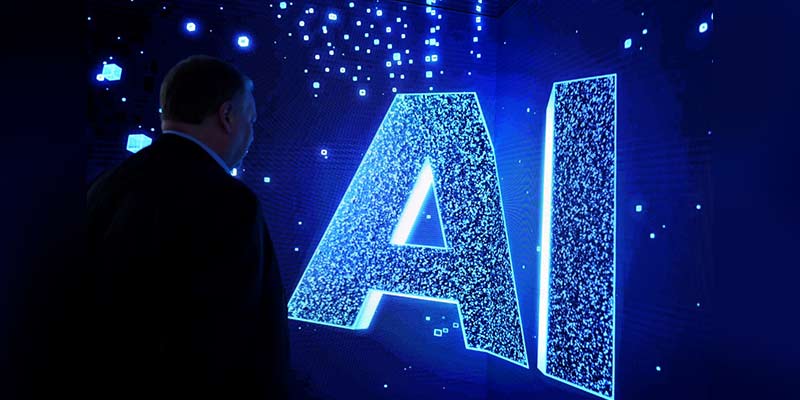- World
- Mar 28
- Sayan Banerjee
ChatGPT – The new AI revolution in the making
There’s a new sensation in the world of content and tech that has taken everyone by surprise, and unless you’ve been on a digital detox, you would know that we are talking about ChatGPT.
Remember the launch of Google as a search engine or Wikipedia as a knowledge repository which changed the way we consumed and shared content? ChatGPT has the potential to be a development of that scale, disrupting the way we engage with content, writing and communication.
What is ChatGPT?
It is an artificial intelligence (AI) chatbot developed by OpenAI, an AI research company, based on the GPT (Generative Pre-trained Transformer) architecture.
Launched on November 30, 2022, ChatGPT uses natural language processing to respond to questions, engage in human-like conversations, generate text, and perform a variety of other language-related tasks such as writing essays, composing emails, among others.
How does ChatGPT do that?
For one, with the help of 570 GB of data (obtained from online articles, texts, books, etc) and over 300 billion words that it has been fed on. That is how it can generate responses using complex algorithms that analyse and interpret language. The best part is that the AI program is learning continuously and improving from its interactions with users.
What are its applications?
One of the reasons why ChatGPT has made a big splash is because of its varied applications across audience groups. You can ask ChatGPT general knowledge questions, make to-do lists, give tasks that can make your daily life more productive or even engage in ‘small talk’.
ChatGPT can support students in their homework — like writing essays and articles, aiding with grammar checks, paraphrasing information, among others.
Some of its other applications include – chatbots or virtual personal assistants (can be used to develop conversational chatbots for customer support or even an assistant to schedule appointments, etc), language translation support, etc.
ChatGPT can be applied across industries including:
• Education - virtual tutoring, learning languages, developing online courses, building apps, among others.
• Legal - research, contract reviews, etc.
• Healthcare - developing virtual healthcare assistants that can help patients with treatment options and other medical queries.
• Public relations and advertising - generating press notes/releases, personalised advertising content, ad copies, producing video ideas, etc.
• IT - helping developers spot errors in their code.
It is transforming the way we interact and communicate with computers and the possibilities are truly endless.
ChatGPT is currently open to the public free of cost because it is in its research and feedback-collection phase. One can access it by visiting chat.openai.com/chat and creating an OpenAI account.
However, because of the high demand, sometimes access can get restricted. To address this, the company has recently started a paid subscription ($20/month) model called ChatGPT Plus which is available even when demand is high.
Additionally, it has a faster response speed and subscribers to this plan will get priority access to new features that come in.
Does ChatGPT have any limitations?
Yes, it does. Despite its ability to learn, this AI solution is only as evolved as the information it can access through its machine learning algorithms. So, the responses it gives can contain factual inaccuracies or be irrelevant to the user’s input.
Next, enormous amounts of data need to be managed to train and improve ChatGPT. This requires significant computational resources, which can be expensive, limiting the ability of many companies to adopt this technology.
Also, unlike Google Search, ChatGPT doesn’t scan the web for information on recent events, and its information is limited to things it learned before 2021, making some of its responses feel dated.
Lastly, ChatGPT also raises concerns around copyright infringement, plagiarism, data privacy and consent, which is the use and sharing of personally identifiable information (PII). For example, the AI chatbot can also be used by hackers and cybercriminals to build convincing phishing emails.
What does the future behold for this AI chatbot?
ChatGPT offers notable outcomes for the consumer at large, and is also a potential key contributor to enterprise use cases, particularly in the space of customer service and support. Imagine a scenario where the chatbot is not only able to have a meaningful conversation with the user but can also understand the user’s problem and provide a relevant solution. That will be a game-changer for organisations.
Earlier this year, Microsoft announced a new multiyear, multibillion-dollar investment with OpenAI. The investment is the third phase of the partnership, following Microsoft’s previous investments in 2019 and 2021. According to Microsoft, this partnership will fast-track innovations in AI for both companies.
The new version – ChatGPT-4
OpenAI has now launched GPT-4, its most advanced system, producing safer and more useful responses while leveraging more data and computation power.
GPT-4 surpasses ChatGPT in its advanced reasoning capabilities, and creativity. It can generate, edit, and engage with users on creative and technical writing tasks, such as composing songs, writing screenplays much better than before.
It is multi-modal, which means it can generate content from both image (accept images as inputs and generate captions, classifications, and analyses) and text prompts.
It is capable of handling over 25,000 words of text, allowing for use cases like long form content creation, extended conversations, and document search and analysis.
However, GPT-4 still has many known limitations that the OpenAI team is working to address, such as its inability to filter responses that may appear socially biased. Currently, GPT-4 is available as part of the ChatGPT Plus subscription and as an API for developers to build applications and services.
Is it worth all the hype?
Only time will tell if ChatGPT is a Google search engine killer. Having said that, the AI chatbot’s ability to answer questions or respond to natural language queries, to paraphrase, to explain concepts in a simplified manner will certainly give the Google search engine, which largely depends on keyword searches, a run for its money.
Google has already launched its answer to ChatGPT with Bard. While Google Bard uses Language Model for Dialogue Applications (LaMDA), and can offer responses based on real-time, current research pulled from the internet, ChatGPT, on the other hand, uses its Generative Pre-training Transformer (GPT) model, which is trained on data prior to late 2021.
Many similar platforms are expected to be launched by tech giants. The AI race has begun.
As time passes by, AI chatbots will only improve and become ‘smarter’ and more ‘intelligent’ by utilising newer machine learning techniques and training on fresh sets of data. It is likely that ChatGPT will become more skilful at answering a wider range of inquiries and requests, with greater accuracy.
Furthermore, to make the platform safer to use, OpenAI is taking several commendable steps to avoid racist, sexist and offensive outputs that have beleaguered other chatbots.
For this generation, these are exciting times, as we are going to witness the AI chatbot’s ongoing development and improvement. ChatGPT is worth keeping an eye on.
(Sayan Banerjee is a senior manager, technology consulting, at a Big 4 consulting firm. The views expressed here are personal.)



